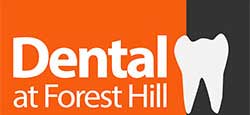Understanding Gum Disease
Known also as periodontal disease, gum disease is a common oral health problem affecting millions of people worldwide. Even if this illness is somewhat widespread, many people are still ignorant of its symptoms. Early identification and successful management depend on an understanding of these signs.
Don't let gum disease sneak up on you! Understanding its signs and symptoms is key to maintaining optimal oral health.
The Early Warning Signs
1. Bleeding Gums
Especially when brushing or flossing, bleeding gums is one of the first indications of gum disease. There can be inflammation and infection in the gum tissue causing this bleeding.
2. Persistent Bad Breath
A clear sign of gum disease is halitosis, or persistent bad breath. Bad breath odour can be caused by bacteria that thrive in the pockets created by gum recession producing pungent chemicals.
3. Gum Recession
Gum recession is the process by which the roots are revealed by the gum tissue pulling away from the teeth. Untreated, this can cause sensitivity, cosmetic issues, and a higher chance of other oral health issues.
4. Swollen or Tender Gums
Gum disease often presents with sore or inflamed gums. A trip to the dentist for assessment and therapy should be prompted by swelling and pain, which could be signs of an underlying infection.
Advanced Symptoms
1. Loose Teeth
Teeth may come loose or move position as gum disease worsens because the supporting bone structure weakens. Both bite function and general dental health may be greatly impacted by this instability.
2. Pus Formation
Gum disease is obviously advanced when pus is present around the gum line. When a bacterial infection results in puss forming in the spaces between the teeth and gums, prompt professional attention is required.
3. Changes in Bite Alignment
The whole bite pattern and tooth alignment might be impacted by gum disease. Uncomfortable and difficult to chew, misalignment can result from shifting teeth and bone loss.
4. Gum Abscesses
Abscesses within the gum tissue may develop in more advanced stages of gum disease. To save dental health and stop more problems, these painful, pus-filled lesions need to be treated right away.
Prioritize Your Oral Health
The first step in preserving the best possible oral health is to identify the warning signs of gum disease. Gum disease can be stopped in its tracks and smiles preserved for many years to come by being watchful and getting prompt treatment from a dentist. A healthy mouth and a confident smile are mostly dependent on preventative maintenance.


